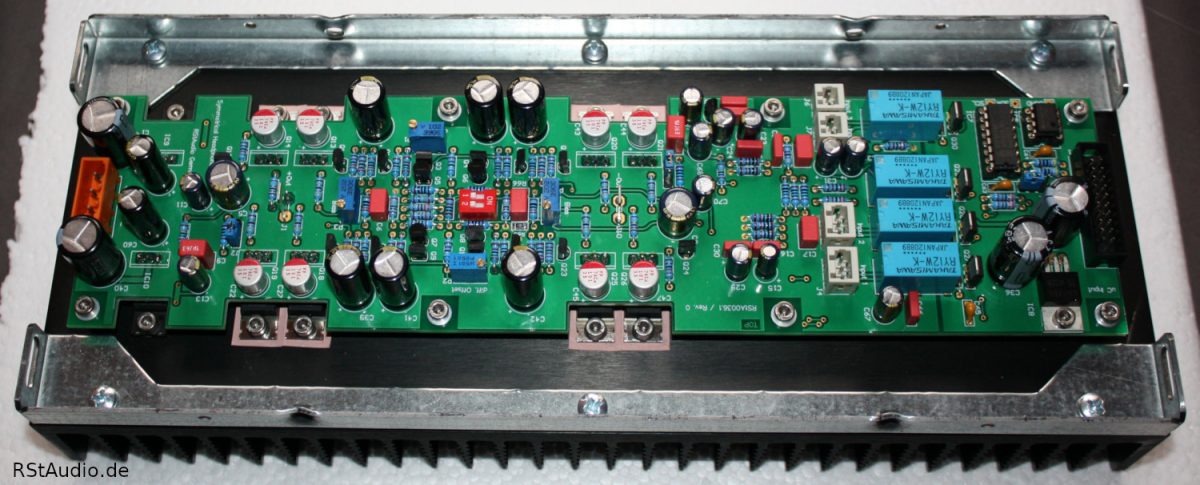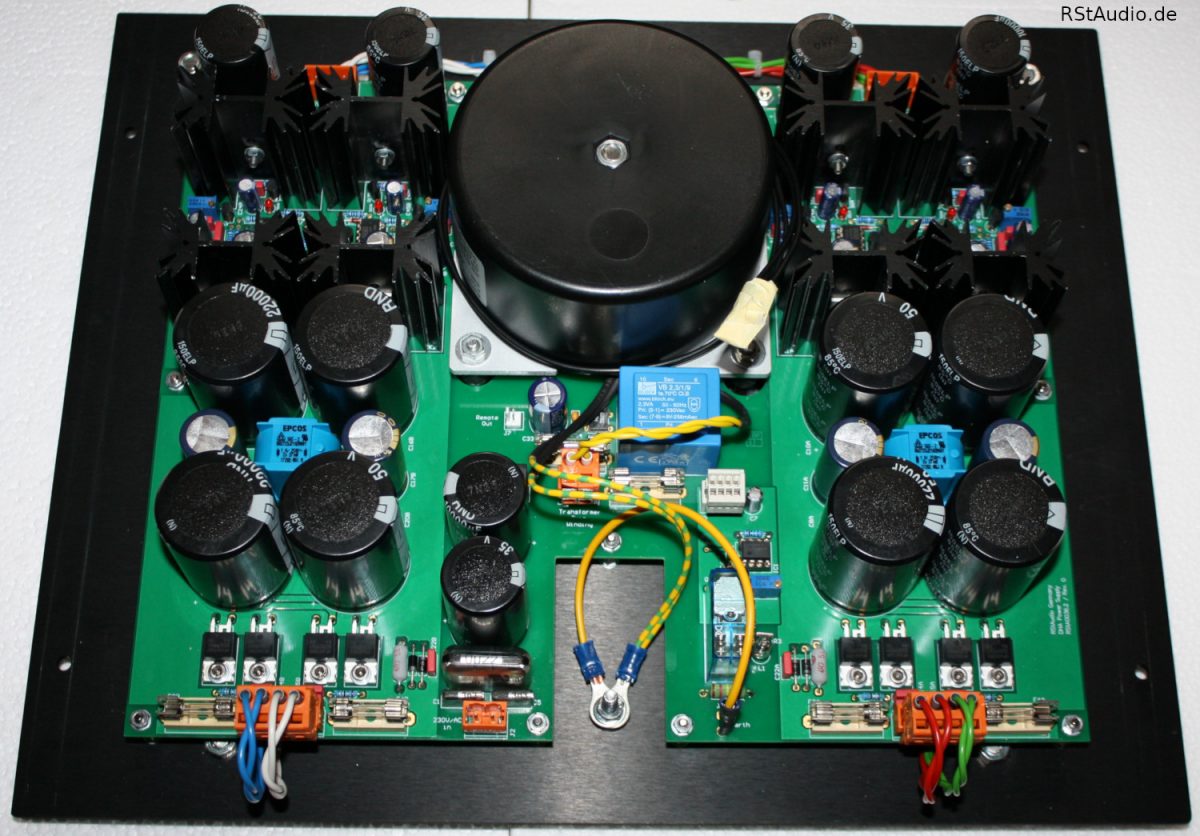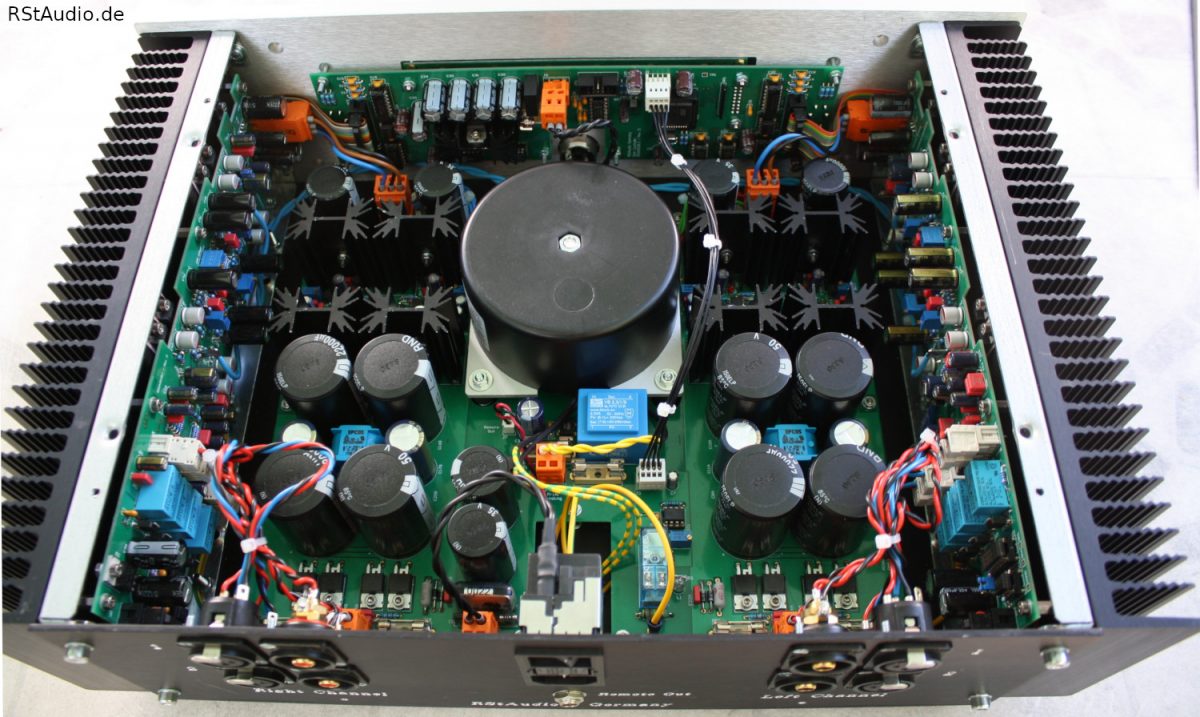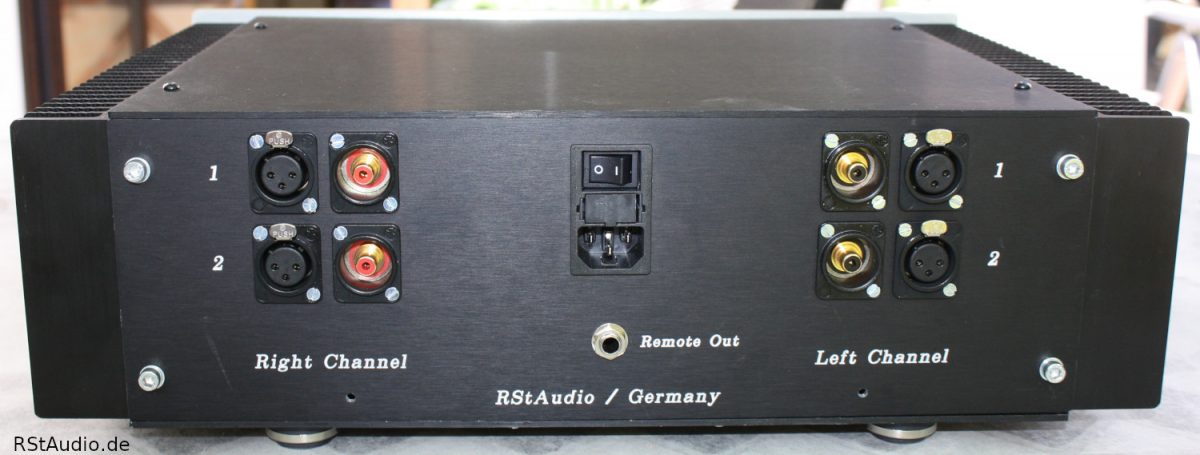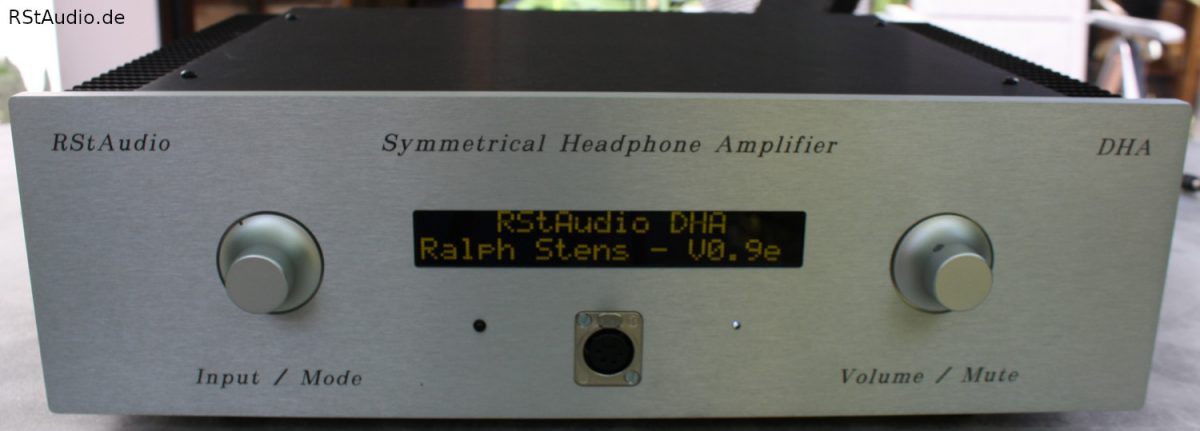
Table of Contents
- Introduction
- Structure of the Amplifier
- Power Supply
- Control of the DHA
- Installation in the Enclosure
- Audiophile Review of the DHA
Introduction
17-06-2019
With the headphone amplifier HA1 built up in 2015, I have listened to music very happily over the years. At first with my old AKG headphones and since the end of 2018 with my new Sennheiser HD 800 S. As I had been planning to buy the Sennheiser for a long time and the circuitry of the HA1 did not really match my preferences, I started planning a headphone amplifier for the HD 800 S in 2017.
The Sennheiser HD 800 S is supplied with cables for balanced and unbalanced operation. This was very convenient for me, and according to my conceptions, the design of the new headphone amplifier should of course be (super-) symmetrical.
Over a longer period of time I have analyzed different designs in SPICE, finally I decided for a UGS6 module with output stages in XA.8 topology. In addition, servo controllers should be integrated to be able to avoid any coupling capacitors.
on 16-06-2019 the DHA replaced my HA1
Structure of the Amplifier
17-06-2019
The headphone amplifier is mounted in a heat sink enclosure of HiFi-2000. The complete audio electronics for one channel, including the input selection circuit with control, is on a printed circuit board which is mounted on one of the two heat sinks.
The DHA has 2 balanced and 2 unbalanced inputs. The unbalanced inputs are balanced directly behind the input by use of a DRV135. The inputs are switched by relays. These relays are controlled by an I2C port module which is also placed on the audio board. The potentials of the analog and digital ground are strictly separated to avoid interference from the digital electronics.
The balanced input signal reaches the volume adjustment. For this I used the integrated potentiometer MUSES72320 from New Japan Radio which I had preferred for years. Its digital signals are also completely decoupled from the digital section by using a ADuM3154.
The MUSES72320 is followed by the actual amplifier circuit of the headphone amplifier. It is a discrete super-symmetrical amplifier formed by a UGS6 module in the input and two output stages in XA.8 topology. Two circuit parts are still needed to adjust the quiescent current of the respective output stage with an integrated servo controller that keeps the absolute output offset at 0V. The gain is selectable via DIP switches and can be 12dB, 16dB or 20dB.
One output stage – and each channel of course has 2 of them – consists of a class AB push-pull and a single ended class A stage with the TO-220 MOSFET’s IRF610 / IRF9610. The quiescent current per MOSFET is set to 50mA. This results in a power dissipation of 10W per channel which makes the relatively large heat sink noticeably warm. The load – i.e. the headphone – is connected to the two outputs of the power amplifiers and thus has no direct contact to ground (bridge power amplifier).
The servo’s can be deactivated, so I have the possibility to adjust the differential and absolute offset of the amplifier manually.
The SMD components (DRV135, MUSES72320, …) are placed on the back of the amplifier board and therefore are not visible on the photos.
Power Supply
17-06-2019
As with the audio circuit, I made no compromises with the power supply and brought in all my current knowledge about the construction of audiophile power supplies.
The 230V/AC power side starts with a mains socket with built-in fuses, mains switch and mains filter coming from Schurter. The earthing cable is wired directly from this socket to the central earthing point on the bottom of the housing (one M5 screw). The phase and the neutral wire go directly to the printed circuit board and are filtered there again by 3 capacitors (Wima MP3 X2 and Y2). The DC filter then filters out any DC voltage components on the mains voltage. After these 3 filters, the mains voltage reaches the primary winding of the toroidal transformer.
As usual I install a transformer from Müller Elektrotechnik which was designed according to my requirements. The used transformer has 5 secondary windings, 4 or better said 2×2 for the supply of the two amplifiers and one for the supply of the digital electronics.
The DC voltage supply for the amplifiers is of course designed in dual-mono construction – except for the common transformer.
Each 2 of the 4 secondary voltages of the transformer are first fed to a snubber network and then to a bridge rectifier with ultra fast soft recovery diodes. A CLC filtering with current compensated chokes and 4× 22mF electrolytic capacitors follows behind the diodes. The DC voltages are then further filtered with a capacitance multiplier and then regulated to the desired output voltage of ±25V by a modified Jung regulator with extremely low noise.
The two analog grounds are each connected to earth on the power supply board via a resistor and 2 antiparallel connected diodes.
Furthermore, there is an additional small transformer on the board whose task is to provide an electrically isolated unregulated DC voltage for remote activation of further components.
Finally, there is a circuit part on the board to determine the correct mains phase. The mains phase is not determined permanently but is switched on and off by the controller via a relay. This means that only a small current flows into the earth for a short time. The phase is determined via a neon lamp which is evaluated by a light-sensitive resistor and a following comparator.
Control of the DHA
17-06-2019
If you use the MUSES72320 you have to install a microcontroller into the system, it is the only way to control this chip.
The controller board here uses – as always in my design’s – the Atmel AT89C51ED2 controller. The system is operated by 2 rotary encoders or an RC5 remote control and a 2×20 OLED with 9.66mm high letters. The board controls the two MUSES72320 and switches the audio relays. In addition, it controls the phase determination as described above. As a small gimmick, the (blue) LED for the mains voltage indication can be nearly continuously adjusted in brightness from the controller.
The rotary encoders, the OLED, the LED and the IR receiver are integrated on the board and therefore no further wiring is necessary. In addition, the rectification and voltage regulation for the power supply of the digital system is also on the board.
Installation in the Enclosure
17-06-2019
As already mentioned above I use again a case from HiFi-2000. This time a Dissipante with 3HE, 300mm depth and of course the 10mm thick front panel.
On the picture above you can see how the 4 printed circuit boards were mounted into the cabinet. The two audio boards are located on the left and right side on the heat sinks, the controller board is attached to the front panel from behind and the power supply to the base plate. The transformer is also mounted with a mounting plate and rubber buffers through cutouts in the power supply board on the bottom of the case.
On the rear side you can see the 230V/AC connector and the remote output in the middle. Left and right are the 4 input connectors per channel (2× XLR and 2× Cinch).
The front can be seen at the beginning of this page and corresponds to my standard setup with a centered display and 2 rotary encoders left and right of it. Additionally the front of the DHA is equipped with the output connector for the headphone (XLR 4-pin). To the left of this jack you can see the IR receiver and to the right the power LED.
Audiophile Review of the DHA
17-06-2019
The first sound impression was very promising. The super-symmetrical circuit technology is in any case extremely compatible with the Sennheiser HD 800 S. With this combination I have again the extraordinary resolution I am used to from my normal audio system. And of course I can only give a final evaluation after a break-in time.
07-08-2019
Now I’ve heard nearly 2 months almost every day with the combination DHA and Sennheiser HD 800 S music and I must say I’m really amazed. The combination simply plays together fantastically. Once again the immense advantages of the SUSY circuit topology have been shown to me. I expected a lot, but the audiophile performance of the DHA exceeded all my expectations and hopes. A very successful construction!

